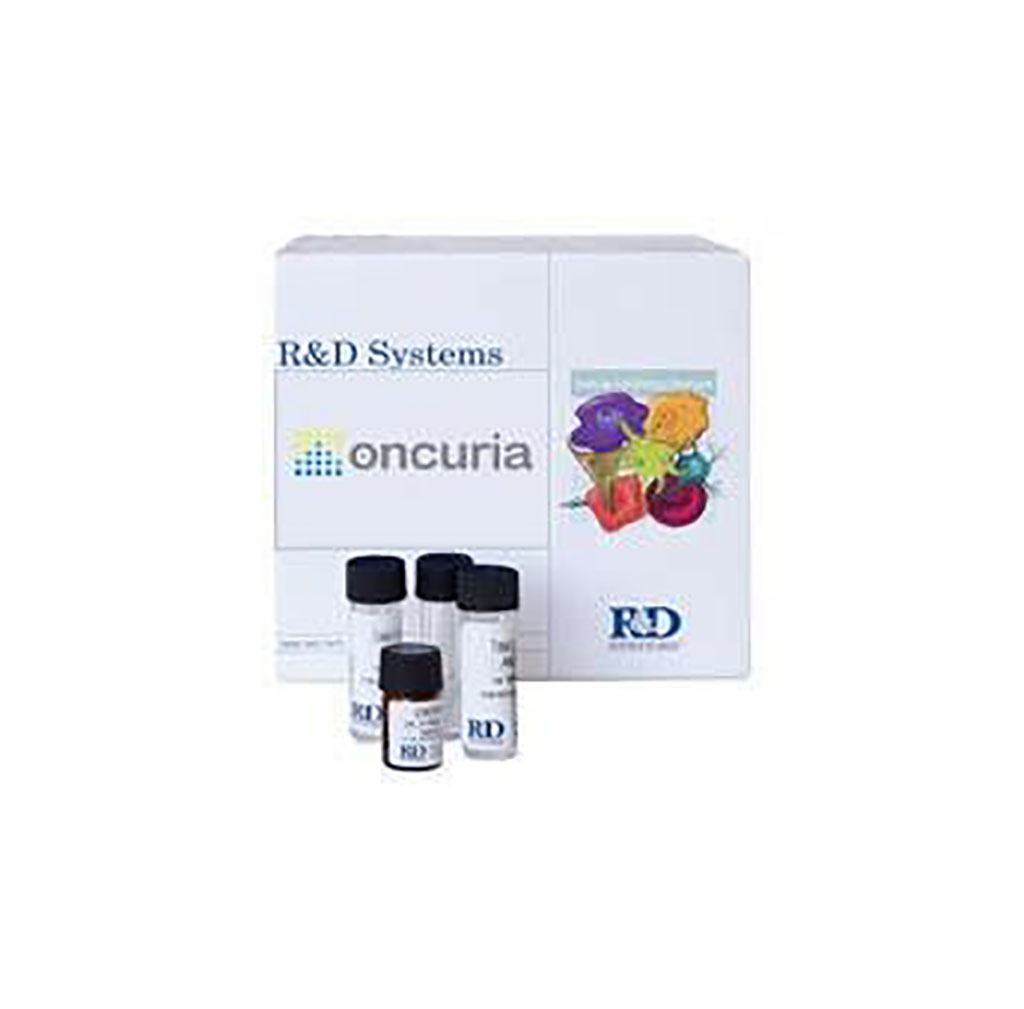Multiplex Bead-Based Immunoassay Validated for Non-Invasive Bladder Cancer Detection
By LabMedica International staff writers
Posted on 04 Jan 2021
Cancer of the urinary bladder has two unique features: the tumor is continuously immersed in a urine and the tumor is able to shed cells or release tumor associated products (e.g., protein, DNA, RNA) directly into urine, which is easily collected and assessed.Posted on 04 Jan 2021
Though urine is largely considered a harsh environment with varying pH and high salt levels, products associated with bladder tumors within the urine have been shown to correlate with their presence within the actual bladder tumor. Promising diagnostic biomarkers included nuclear matrix protein 22 (NMP-22) and bladder tumor antigen (BTA). Unfortunately, these tests suffer from high false-positive rates.

Image: Oncuria is a simple urine test that detects and analyzes multiple tumor protein biomarkers for improved bladder cancer detection (Photo courtesy of Nonagen Bioscience Corporation).
A multidisciplinary team of scientists collaborating with Cedars-Sinai Medical Center (Los Angeles, CA, USA) assessed the analytical performance of a multiplex assay called Oncuria (Nonagen Bioscience Corporation, Los Angeles, CA, USA) to quantify protein biomarkers towards a bladder cancer associated diagnostic signature in voided urine. The team used Luminex xMAP technology (Luminex Corporation, Austin, TX, USA), to measure the concentrations of 10 urinary analytes: angiogenin, (ANG); apolipoprotein E, (APOE); alpha-1 antitrypsin, (A1AT); carbonic anhydrase 9,(CA9); interleukin 8, (IL8); matrix metallopeptidase 9, (MMP9); matrix metallopeptidase 10, (MMP10); plasminogen activator inhibitor 1, (PAI1); syndecan 1, (SDC1); vascular endothelial growth factor, (VEGF).
The scientists reported that their analytical evaluation demonstrated a) all antigen cross-reactivity was noted to be <1% of the tested concentration, b) minimal detected dose ranged from 0.295 pg/mL in IL8 to 31.1 pg/mL in APOE, c) highly reproducible and accurate noting coefficient of variation (CV) and relative error (RE) values below 15% for all analytes and d) minimal interference. The assay can be completed in less than five hours using as little as 150 μL of voided urine.
The authors concluded that Oncuria is the first multiplex bead-based immunoassay for the non-invasive detection of bladder cancer that has been analytically validated as a tool with the potential to help clinicians manage patients at risk of harboring bladder cancer. They believe that this assay, unlike most urine-based diagnostic assays, is well suited to identify patients who may require additional testing to rule in the presence of a bladder tumor. Implementing the assay clinically is a necessary first step to improve on current diagnostic approaches and to demonstrate the clinical utility of advanced molecular diagnostic testing. The study was published on November 13, 2020 issue of the journal Practical Laboratory Medicine.
Related Links:
Cedars-Sinai Medical Center
Nonagen Bioscience Corporation
Luminex Corporation







 assay.jpg)





